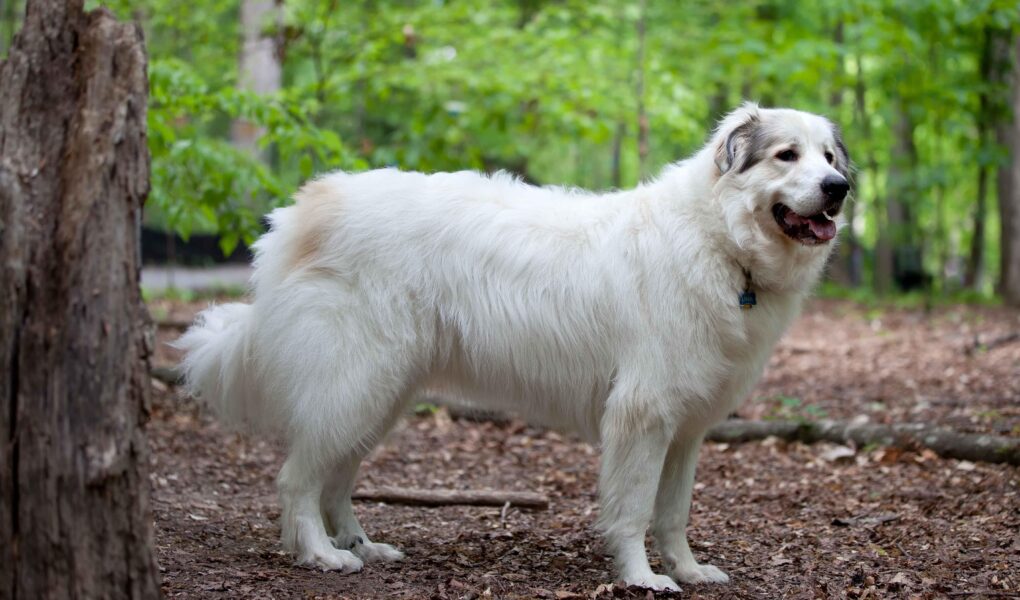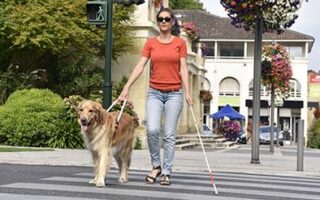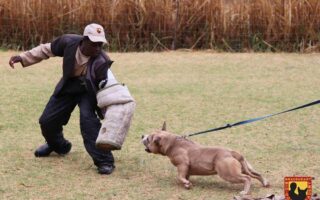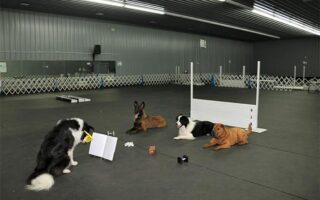Welcoming a Great Pyrenees into your home is like inviting a gentle giant with a heart as big as its fluffy frame. Known for their striking white coats and impressive size, these majestic dogs are not just breathtaking to behold but also possess an unwavering loyalty and a natural instinct to protect. However, the journey from playful puppy to well-mannered companion requires patience, understanding, and a sprinkle of creativity in training techniques. Whether you’re an experienced dog owner or new to the world of canine companionship, mastering the art of Great Pyrenees training can deepen the bond you share with your furry friend while ensuring that they harmoniously integrate into your family dynamics. In this article, we’ll explore effective strategies, essential tips, and unique insights that will help transform your Great Pyrenees into the well-behaved partner you envision.
Table of Contents
- Understanding the Great Pyrenees Temperament for Effective Training
- Essential Training Techniques Tailored for Great Pyrenees Puppies
- Building a Strong Bond Through Positive Reinforcement Strategies
- Managing Behavioral Challenges: Solutions for Common Great Pyrenees Issues
- Q&A
- In Summary
Understanding the Great Pyrenees Temperament for Effective Training
The Great Pyrenees is renowned for its gentle and calm demeanor. This breed is often characterized by a strong protective instinct and a friendly disposition, making them excellent companions and guardians. Understanding this temperament is essential for effective training, as their natural inclination is to be independent and aloof, especially if they perceive a threat to their families. When training, it’s essential to develop a bond based on trust and respect, as these dogs respond significantly better to positive reinforcement rather than harsh discipline. Engaging them with short, fun training sessions will hold their attention and encourage them to learn more efficiently.
To facilitate a smooth training process, it’s beneficial to take into account their intelligent yet stubborn nature. This breed excels when given clear boundaries and a sense of purpose. Incorporating activities that stimulate both their mind and body can enhance their willingness to engage in training. Here are some strategies that resonate well with the Great Pyrenees:
- Use positive reinforcement techniques, such as treats and praise.
- Establish a consistent training routine to create familiarity.
- Engage them in socialization events to enhance their adaptability.
- Incorporate herding exercises to channel their natural instincts.
Essential Training Techniques Tailored for Great Pyrenees Puppies
Training a Great Pyrenees puppy requires patience and a tailored approach to foster their natural instincts and temperament. Start with positive reinforcement techniques, rewarding desired behaviors with treats, praise, or playtime. Since these pups are known for their independent nature, establishing a strong bond is essential. Consider engaging them in short training sessions that keep them focused and motivated. This ensures their enthusiasm remains high, making it easier for them to absorb new commands. Incorporate basic commands like “sit,” “stay,” and “come,” as these are foundational skills that will support their growth into well-mannered adult companions.
Socialization is equally critical during the early months. Introduce your Great Pyrenees puppy to a variety of people, pets, and environments to help them develop a confident and adaptable demeanor. Effective techniques include:
- Controlled Introductions: Use on-leash meetings with other friendly dogs to build confidence.
- Positive Exposure: Take them to busy parks, pet-friendly stores, or puppy classes.
- Gradual Challenges: Slowly introduce new sights and sounds, rewarding them for calm behaviors.
With consistent training and socialization, your Great Pyrenees will not only become a loyal companion but also a joy to have around. Establishing clear boundaries and expectations early on will lead to a happier and more balanced adult dog.
Building a Strong Bond Through Positive Reinforcement Strategies
Creating a lasting connection with your Great Pyrenees hinges on understanding their nature and using techniques that foster trust and affection. Positive reinforcement is not just about rewarding good behavior; it’s about building a language where praise, treats, and play become tools of communication. This approach empowers your dog by allowing them to associate commands with delightful outcomes. Use a variety of motivators to keep your pup engaged:
- Treats: High-value snacks can make training sessions more appealing.
- Praise: Verbal encouragement is essential for emotional bonding.
- Playtime: Incorporating their favorite toy or game can turn training into a joyous event.
To effectively implement positive reinforcement, consistency is key. Ensure that everyone involved in the dog’s training uses the same cues and rewards. This uniformity not only accelerates learning but also reinforces trust. Keep track of your Great Pyrenees’ progress by using a simple training log:
| Behavior | Reward Type | Date Achieved |
|---|---|---|
| Sit | Treat | 10/01/2023 |
| Stay | Praise | 10/05/2023 |
| Come | Playtime | 10/10/2023 |
By focusing on these strategies, you not only teach your Great Pyrenees essential commands but also enhance the bond you share. Remember, patience during this process is invaluable—watching your dog flourish through encouragement brings a rewarding sense of fulfillment for both of you.
Managing Behavioral Challenges: Solutions for Common Great Pyrenees Issues
Great Pyrenees are known for their gentle temperament and protective instincts, but even the most lovable dogs can exhibit behavioral challenges. Understanding these issues is the first step toward effectively managing them. For instance, high-energy levels can lead to excessive barking or digging. To mitigate these behaviors, it’s essential to provide regular exercise and mental stimulation. Incorporating activities such as daily walks, playtime in a secure yard, or enrichment puzzles can significantly reduce frustration and boredom, leading to a calmer demeanor.
Additionally, socialization is key in shaping a well-rounded Great Pyrenees. Early exposure to various environments, people, and other animals helps prevent fear-based reactions and aggression. Here are some practical tips for improving social skills:
- Organize playdates with other friendly dogs.
- Visit busy parks to get accustomed to crowds.
- Enroll in puppy classes to learn basic commands.
Combining these strategies with consistent training techniques will help ease common behavioral issues, creating a more harmonious life with your beloved Great Pyrenees.
Q&A
Q&A: Training Your Great Pyrenees
Q: What makes the Great Pyrenees a unique breed in terms of training?
A: The Great Pyrenees, known for their gentle demeanor and majestic appearance, were originally bred to guard livestock in the mountainous regions of France. This independent streak and strong protective instinct can make training a unique challenge. They are intelligent but often exhibit a calm, patient nature that might lead them to weigh their options before acting on commands.
Q: What are some effective training techniques for a Great Pyrenees?
A: Positive reinforcement is your best friend when it comes to training a Great Pyrenees. Use treats, praise, and play to encourage desired behaviors. Consistency is crucial; establish routines and be patient as they learn at their own pace. Consider using gentle guidance and engaging activities that align with their natural instincts, like herding games, to keep them motivated.
Q: How important is socialization for my Great Pyrenees?
A: Extremely important! Socialization helps your Great Pyrenees feel comfortable in various environments, among different people and pets. Start introducing your pup to new experiences early on. Aim for controlled encounters that allow them to explore safely. This will foster good behavior and reduce any potential anxiety or timidness in unfamiliar situations.
Q: At what age should I start training my Great Pyrenees?
A: Begin training as early as possible, ideally when your Great Pyrenees is a puppy, around 8 weeks old. Early training focuses on basic commands and socialization. However, it’s never too late to start! Older dogs can learn new tricks too; just be prepared for a slightly different approach tailored to their maturity level.
Q: How can I address stubbornness in my Great Pyrenees?
A: Patience is key! Stubbornness can stem from their independent nature, but you can combat this by keeping training sessions short and fun. Vary your approach to maintain their interest—incorporate play, new commands, or different training environments. Recognize their unique personality and adapt your methods accordingly to achieve better results.
Q: Are there specific behaviors I should focus on while training my Great Pyrenees?
A: Absolutely! Focus on foundational commands such as sit, stay, come, and leave it. Given their roles as guardians, reinforcing their ability to stay calm and alert in various situations is crucial. Also, work on leash manners since their size can make walks challenging if they’re overly excited.
Q: How do I keep my Great Pyrenees mentally stimulated?
A: Great Pyrenees thrive when their minds are engaged. Incorporate puzzle toys, scent games, or obedience challenges into your routine. Consider joining agility classes or enrolling them in special activities that tap into their natural instincts. Regular mental stimulation prevents boredom and promotes a happy, well-balanced pet.
Q: What are some common challenges when training a Great Pyrenees?
A: One common challenge is their tendency to be aloof or independent. They may not always respond immediately to commands, especially if they’re distracted. Additionally, their strong protective instincts can occasionally lead them to be wary of strangers. Anticipating these behavioral traits and addressing them with gentle, consistent training can help.
Q: When should I seek professional help for training?
A: If you find yourself struggling with certain behaviors or lack the time to dedicate to training, consider reaching out to a professional trainer. Look for someone experienced with large breeds and positive reinforcement methods. They can provide valuable insights and strategies tailored specifically to your Great Pyrenees’s needs.
Q: Any final tips for training my Great Pyrenees?
A: Enjoy the journey! Building a bond with your Great Pyrenees through training can be incredibly rewarding. Remember that every dog learns at their own pace and celebrate their progress, no matter how small. Keep the atmosphere light-hearted, and above all, enjoy the majestic nature of your Great Pyrenees as both a companion and a student.
In Summary
As you embark on your journey of training your Great Pyrenees, remember that patience, consistency, and understanding are your most powerful tools. These magnificent dogs, with their gentle disposition and protective instincts, flourish when they feel secure and engaged. Embrace the quirks and unique personality traits of your Pyrenees; after all, every challenge is an opportunity for growth, both for you and your furry companion. As you cultivate a bond built on trust and respect, you’ll not only strengthen your training efforts but also enrich the companionship you share. With dedicated effort, your Great Pyrenees will emerge not just as a well-trained dog, but as a cherished member of your family—noble in stature and heartwarming in spirit. So step forward with confidence, equipped with the knowledge and tools you need, and watch as your Great Pyrenees transforms into a loyal partner by your side. Happy training!



